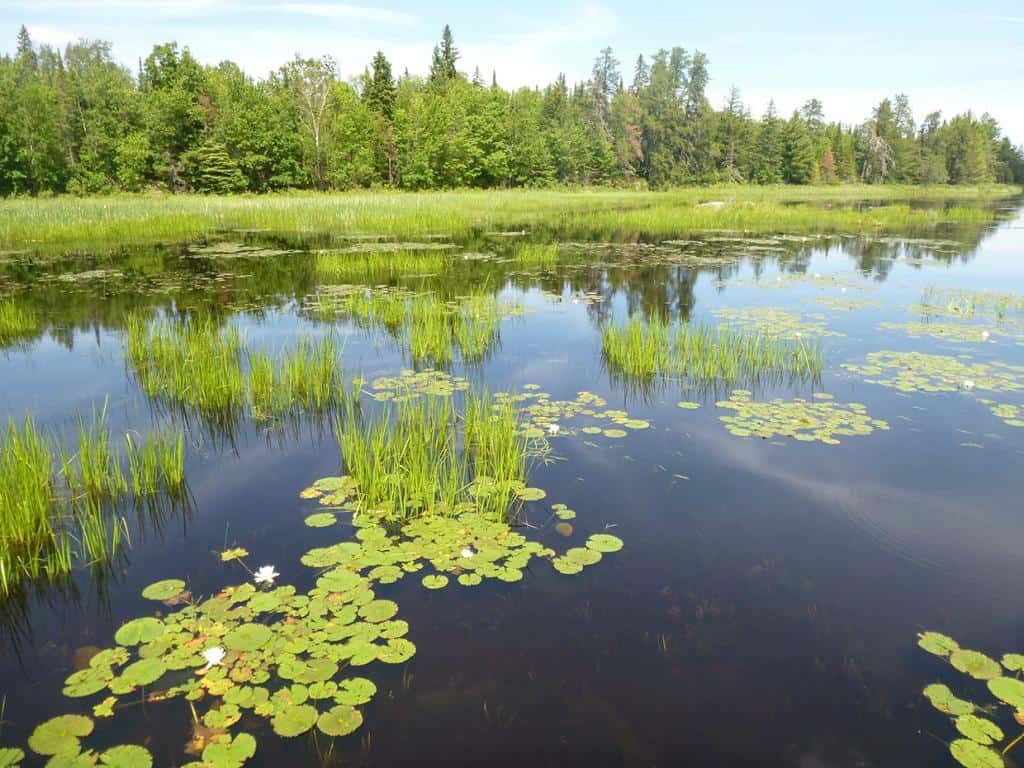
by Alissa Johnson
Imagine boating in Voyageurs National Park and seeing what appears to be an island on the move. It is over six acres in size, composed primarily of cattails and pockmarked by shrubs and small trees. Unanchored, this vegetative mass moves freely—a navigational hazard, a danger to docks and property, and spreading invasive species.
You might not believe your eyes, but what you see is real. A hybrid species of cattail is pushing out native plants, creating monocultures in park wetlands, and sometimes taking to open water.
“It’s not just a navigational issue and taking over wetlands,” said park biologist Bryce Olson. “They disrupt nutrient cycles in the lakes and reduce biodiversity in general. It’s a giant monoculture that doesn’t benefit fish or wildlife.”
Olson is spearheading efforts to remove the invasive plant within Voyageurs National Park. He hopes that large-scale efforts now will not only stem the tide but reestablish native ecosystems.
One of these plants is not like the other
In many people’s minds, the cattail is synonymous with Minnesota lakes. And Voyageurs does have a native cattail. The Broadleaf Cattail grows sparsely and mixes with other types of wetland vegetation. Two other species of cattail, however, have caused the current state of affairs.
First, the Narrowleaf Cattail migrated west from the east coast. It grows thicker and denser, in lower and higher water levels, and outcompetes its native counterpart.
“Even worse is a hybrid of the two,” Olson said. “It can grow in a broader range of conditions and tolerate bigger water level fluctuations. It ends up growing into dense, thick monocultures you see in a lot of wetlands now.”
Outside of Voyageurs, these hybrid cattails clog shorelines and force some property owners to dredge channels from their docks to open water. Yet they often fail to recognize the cattails as invasive.
“For a person living somewhere, the change is fairly slow,” Olson explained, occurring over a couple of decades. “‘Oh, there’s some cattails.’ Then a little more and a little more.” It can feel like cattails have always been there. And it doesn’t help that the hybrid can look like the native cattail or the newcomer. To identify the hybrid, biologists have to run the genetics.
About 10 years ago, when staff ran the genetics in Voyageurs, 95% or more of them were hybrids. They don’t always break free from shore and become massive islands, but they do change the landscape and they do go on the lamb.
“We’ll get reports most years. Most pieces are pretty small—the size of your desk or something. The really large pieces are less common, but it does happen,” Olson said.
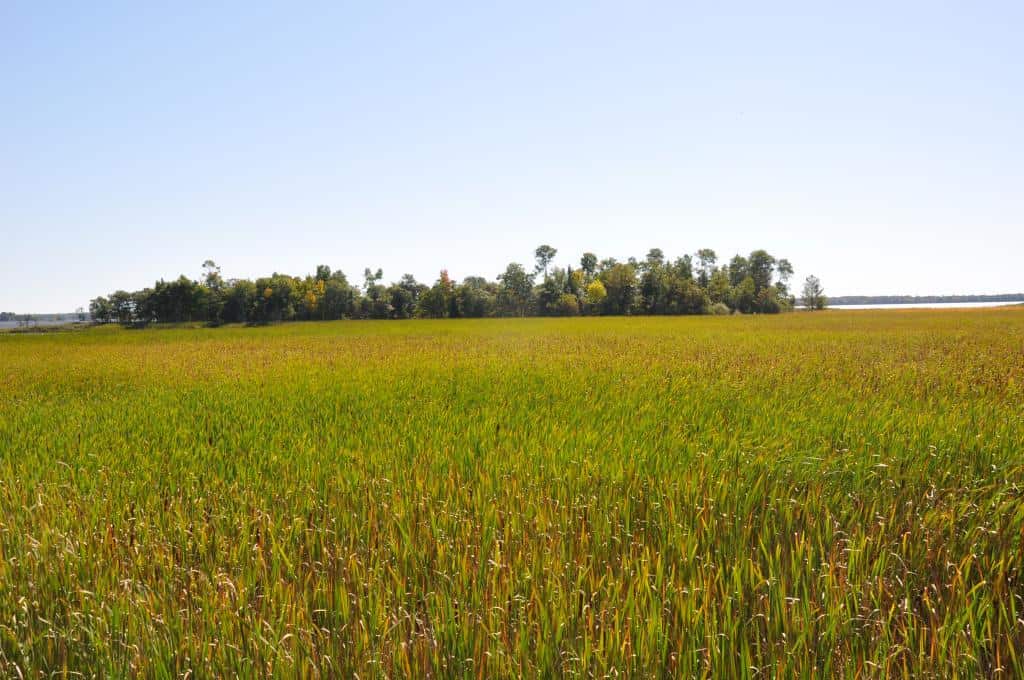
Changing the wetland ecosystem
If you’ve ever held a cattail, you may have noticed that the plants are spongy. Olson explained that chambers or tubes create this texture, also allowing gasses to circulate in the plant. The same type of tissue can be found in the cattail’s rhizomes, which are modified roots that store nutrients and help the plant spread by sending out shoots.
“The cattail plant has flowers, so it can produce seeds. But it can also spread through these shoots from the rhizomes. It creates another plant, sends out another shoot, creates another plant. You can have an entire wetland or area of a wetland that’s all the same plant spreading through these rhizomes,” Olson explained.
The hybrid, which is often sterile, frequently spreads this way. And as the shoots extend into deeper water, the cattail mat floats. Add a change in water level, strong winds or both, and the mats can break free from shore. As it spreads down the lake, it “lands” in other areas and continues spreading there.
According to Olson, very few species benefit from the resulting loss of biodiversity. Even wild rice suffers, displaced by the cattail. As result, the invasion has become a biological and cultural issue affecting the First Nations and Native American tribes that harvest wild rice in Canada and the United States.
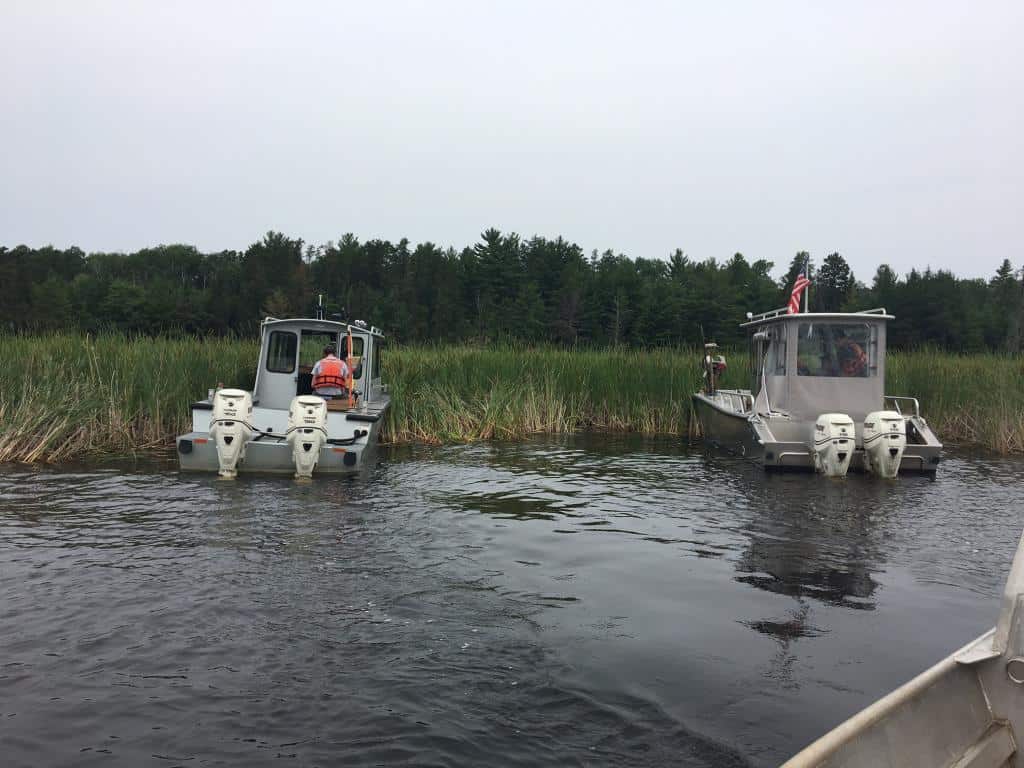
Tackling large-scale removal
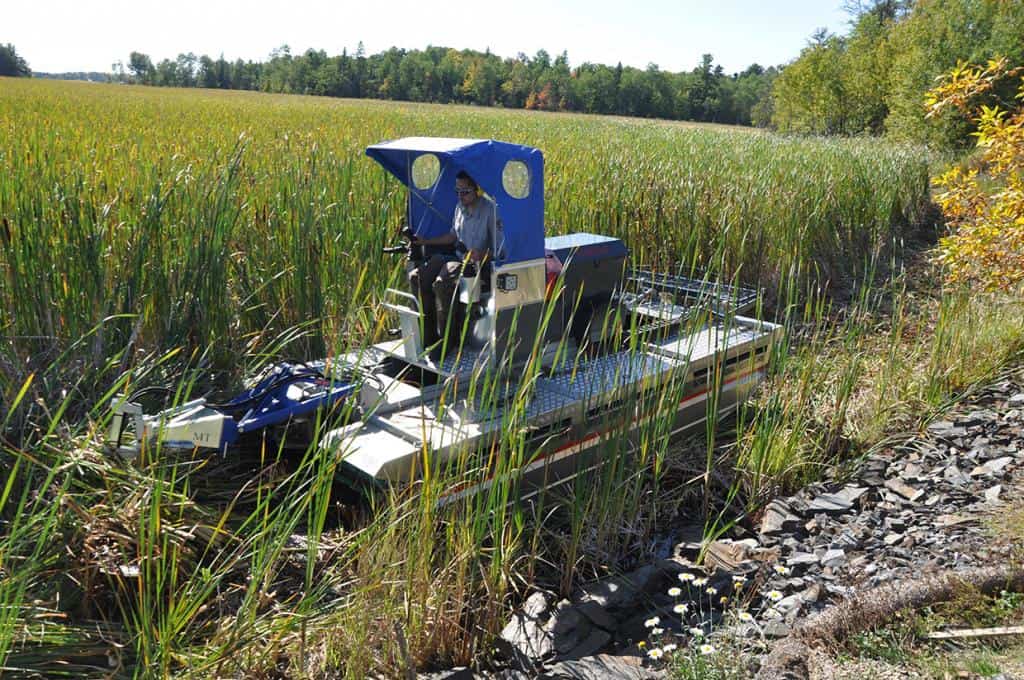
When a large island of cattails takes to the open water and has the potential to cause problems, park staff try to push it back where it came from or to a location with cattails. It’s not a simple prospect—identifying the source is one thing, and moving the mass another. For one such attempt, they employed eight large boats for the better part of a day.
It’s expensive, and doesn’t solve the root of the problem. So the park is developing new policies to deal with the cattails and restore wetlands to a diversity of species. That includes removing portions of the large monocultures, in particular the floating mats before they detach. Most people, Olson said, think that means spraying.
But Minnesota State Statue designates waters within Voyageurs National Park and the surrounding region as “outstanding resource value waters.” That prohibits the use of herbicides, and according to Olson, the park wouldn’t necessarily use them anyway.
“One proper application will kill 90+ percent of the material, but you’re left with it all sitting there. It starts breaking down and decomposing, and that decomposition process can suck up all the oxygen and you can kill all the fish if there isn’t enough fresh water circulation,” he said. In addition, to properly restore the wetland, biologists need to remove that vegetative material so native plants can reestablish.
A combination of burning and drowning the plants can work as well, but international regulations in the Rainy Lake Watershed make it difficult to change water levels.
So Olson and his team are using grants from the state’s Outdoor Heritage Fund to test different treatment options. Among their efforts, they’re using a flat bottom barge called a cookie cutter or swamp devil to chop up the cattails and a harvester to transport the debris to shore. There, they leave it above the water line to decompose.
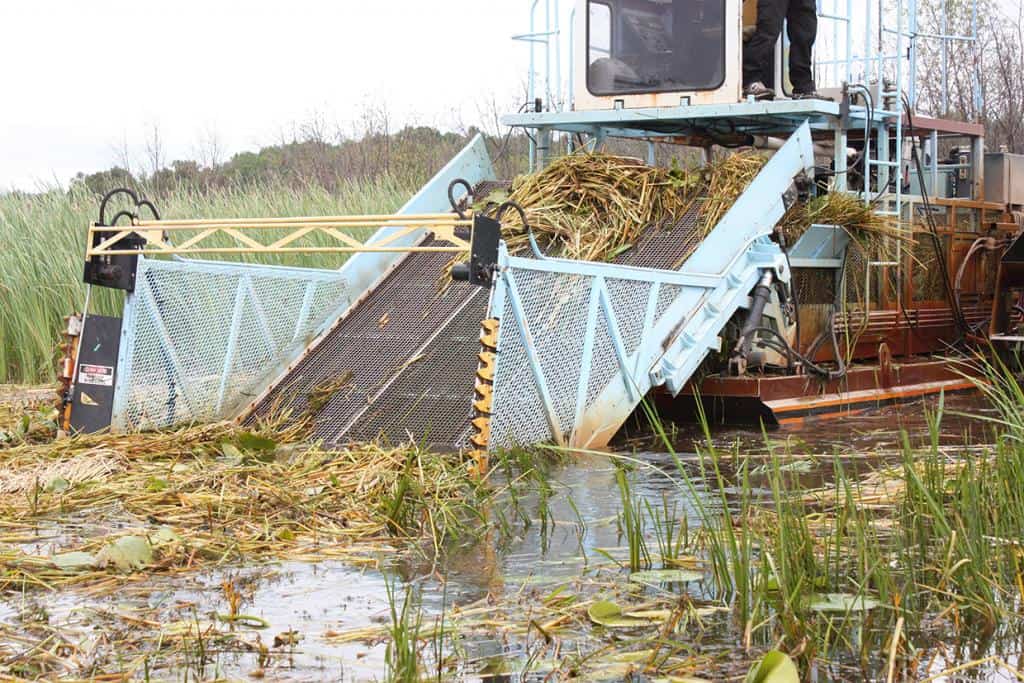
“We’re also talking about going out in late winter/early spring when water levels are at their lowest and trying to scrape along the ice and get rid of standing vegetation. Then when the water is up in spring, it can go above that cut,” he said. That could drown the plants.
They’re also hoping to get a little help from Mother Nature by employing muskrats in their cause. Though the animal’s population has declined in Voyageurs, the team will start reintroducing muskrats this summer.
“Muskrats are native to here, and they eat cattail and use it to build huts. We’re trying to see what role they can play in long term maintenance of the restored wetlands,” he said.
They face unknowns in doing so. Fluctuating water levels may make it difficult for the animal to thrive, and biologists don’t know how the muskrat will respond to the density of the hybrid cattail. But it’s one more piece in the puzzle, collectively referred to as adaptive management. As Olson and the team determine what works, they’ll adapt their approach.
Restoration of the native ecosystem
The long-term goal is, of course, bigger than removing the hybrid cattail. “This whole process is not just remove the cattail and walk away,” Olson said. “We need to establish native vegetation and wild rice because of its cultural significance.”
Ultimately, Olson envisions an ecosystem that is largely self-sufficient, requiring only small-scale cutting or some burning to keep the hybrid cattail at bay. It will take some work to get there, but Olson believes it to be possible.
In one location where a floating cattail mat detached, wild rice grew back from seeds on the lake bottom. “We’re talking decades-old seed so that’s encouraging,” he said. Add the potential of supplemental seeding, which the team is testing, and there is reason to be hopeful. “We can come in and remove cattail and it will come back with other species.”
